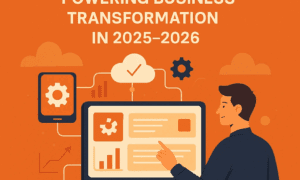Throughout human history cities have always been at the forefront of innovation, culture, and progress. They represent our aspirations, dreams, and the very essence of our collective existence. While we often marvel at glass and steel colossi, the iconic skyscrapers that adorn our urban landscapes, there’s much more to urban development than meets the eye. Let’s take a look beyond skyscrapers, uncovering the profound foundations that underpin modern cities.
Historical evolution of urban development
Urban development has deep historical roots, stretching back to ancient civilizations like Mesopotamia, where the first cities emerged around 3500 BC. These early urban centers, characterized by their intricate infrastructure and governance systems, laid the foundation for what would become modern urban planning.
As the centuries rolled by, cities evolved in response to the needs of their inhabitants. The layout of ancient Rome, with its meticulously planned roads and aqueducts, set a precedent for urban design that would resonate for millennia. Today, remnants of ancient cities like Petra, Angkor Wat, and Machu Picchu continue to capture our imagination, reminding us of the enduring power of urban planning and development.
Infrastructure and transportation
Moving forward, infrastructure and transportation emerge as key pillars of urban development. The advent of the Industrial Revolution in the 18th century transformed the urban landscape with the introduction of railways, canals, and roads. These networks not only facilitated the movement of goods, but also shaped the growth and connectivity of cities.
In the modern era, efficient transportation systems have become indispensable to urban life. From subways in New York City to the extensive metro networks in Tokyo, they are lifelines of metropolises. The evolution of transportation has paved the way for urban sprawl, leading to the growth of suburbs and satellite towns, illustrating the intricate interplay between infrastructure and urban expansion.
Urban planning and design
Urban planning and design are the architects of livable and sustainable cities. Zoning regulations, mixed-use development, and green spaces are the tools at their disposal. Zoning, for instance, segregates land use into residential, commercial, and industrial zones, ensuring a harmonious coexistence of functions. The concept of mixed-use development promotes diversity, enabling people to live, work, and play in close proximity.
Green spaces and parks are the lungs of cities, providing essential respite from the urban hustle. They enhance quality of life, mitigate pollution, and contribute to the overall well-being of residents. Notable examples include Central Park in New York and the meticulously planned Gardens by the Bay in Singapore.
Sustainability and green urbanism
In the 21st century, sustainability principles have taken center stage in urban development. Climate change and environmental concerns are driving cities to adopt eco-friendly practices. Green architecture, characterized by energy-efficient buildings and renewable energy integration, is becoming the norm rather than the exception.
Cities like Copenhagen and Amsterdam are embracing green urbanism with their extensive networks of bike lanes and pedestrian-friendly streets. These initiatives reduce traffic congestion, promote healthier lifestyles, and reduce carbon emissions. It’s a testament to the growing realization that sustainability is not just a buzzword, but an essential aspect of urban development.
Technological advancements
The digital age has ushered in a new era of urban development. Smart city initiatives harness the power of technology to enhance efficiency, connectivity, and quality of life. The Internet of Things (IoT) connects everyday objects, from streetlights to trash cans, to a network that can be monitored and controlled remotely.
Data-driven urban planning relies on big data analytics to make informed decisions about infrastructure, traffic management, and public services. Cities like Seoul and Barcelona have embraced these technologies to optimize urban living. They demonstrate how technology can be a driving force in shaping the cities of the future.
Communications infrastructure
Modern communications infrastructure is the digital backbone of cities. The ongoing POTS replacement (the traditional Plain Old Telephone Service) with advanced telecommunications networks has revolutionized the way we interact within urban environments. High-speed internet, fiber-optic connections, and 5G technology have transformed how we communicate, work, and access information.
These advancements have not only facilitated remote work and education, but also enabled the Internet of Things (IoT) to thrive in urban environments. Smart cities rely on robust communications infrastructure to connect devices and systems that enhance efficiency, safety, and sustainability.
Challenges and solutions
Amidst the progress, urban development faces numerous challenges. Traffic congestion, affordable housing, and environmental sustainability are pressing concerns. To address these issues, innovative solutions are more than required. Congestion pricing, as seen in London and Stockholm, reduces traffic by charging vehicles to enter certain zones during peak hours.
Affordable housing initiatives, such as inclusionary zoning and public-private partnerships, aim to provide housing options for all income levels. Cities are also increasingly adopting sustainable practices, from green building standards to renewable energy sources, to mitigate their environmental footprint.
Future trends
The future of urban development is ripe with exciting possibilities. Mixed-use neighborhoods are on the rise, offering vibrant, walkable communities where residents can live, work, and socialize within close proximity. The COVID-19 pandemic has accelerated the adoption of remote work, changing the way we think about city design and commuting.
Crisis response and resilience
Cities must also be resilient in the face of crises. Natural disasters, pandemics, and economic downturns can threaten the fabric of urban life. Effective crisis response plans and resilient infrastructure are vital to ensure cities can withstand and recover from adversity.
Cultural preservation
Preserving cultural heritage and historical sites is integral to urban development. Cities around the world, from Rome to Kyoto, safeguard their historical treasures as a testament to their rich histories and the importance of preserving the past within the ever-evolving urban landscape.
Global urbanization
The global trend of urbanization continues to shape our world. Megacities are emerging as dominant players on the global stage, and urban sprawl presents both opportunities and challenges for the future.
Final words
Urban development is a living, breathing entity that reflects our aspirations, adapts to our needs, and shapes our future. By understanding the foundations of urban development, we are better equipped to create cities that are not just towering testaments to human achievement, but also thriving, sustainable, and inclusive where the human spirit can truly flourish!



































